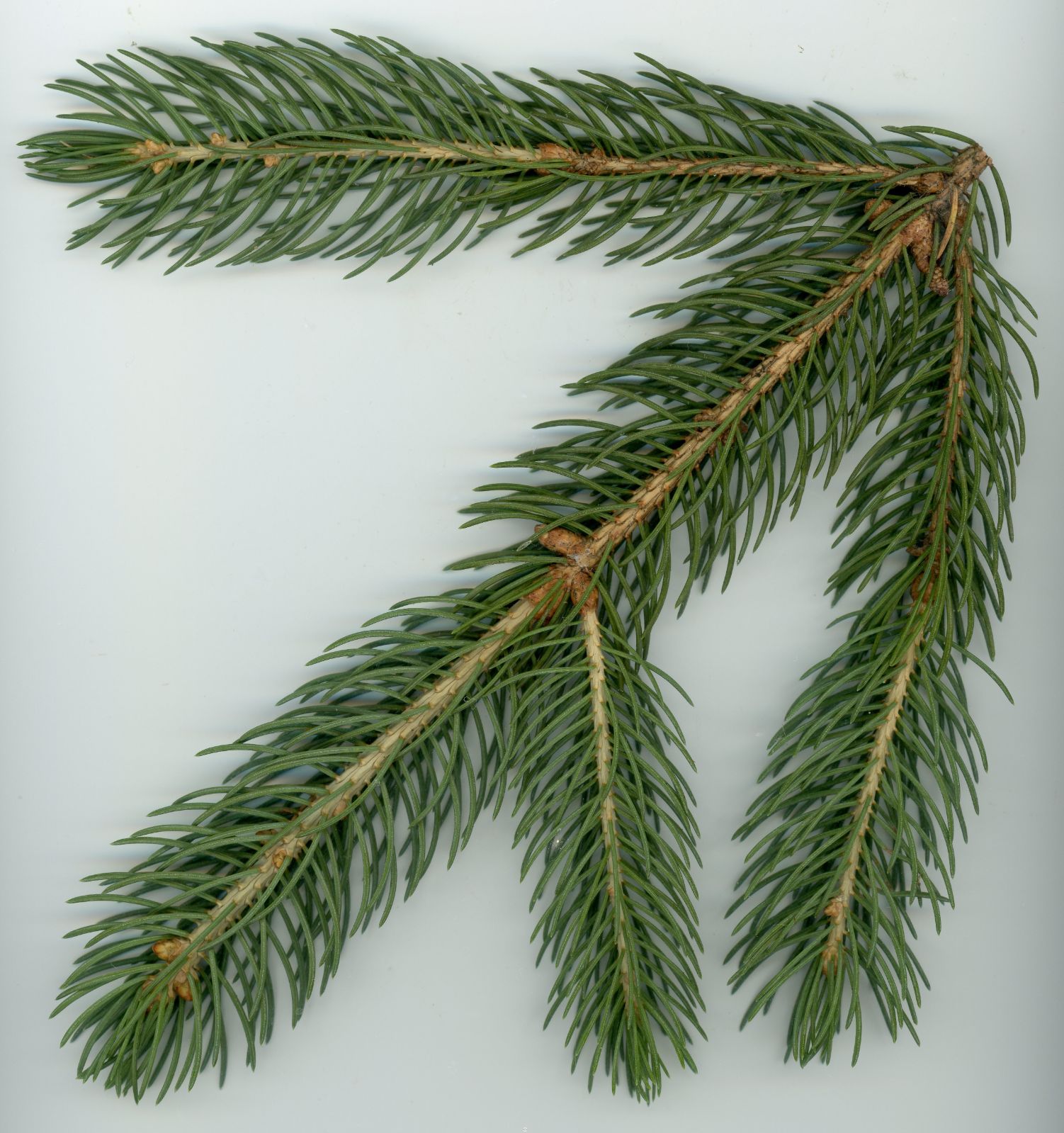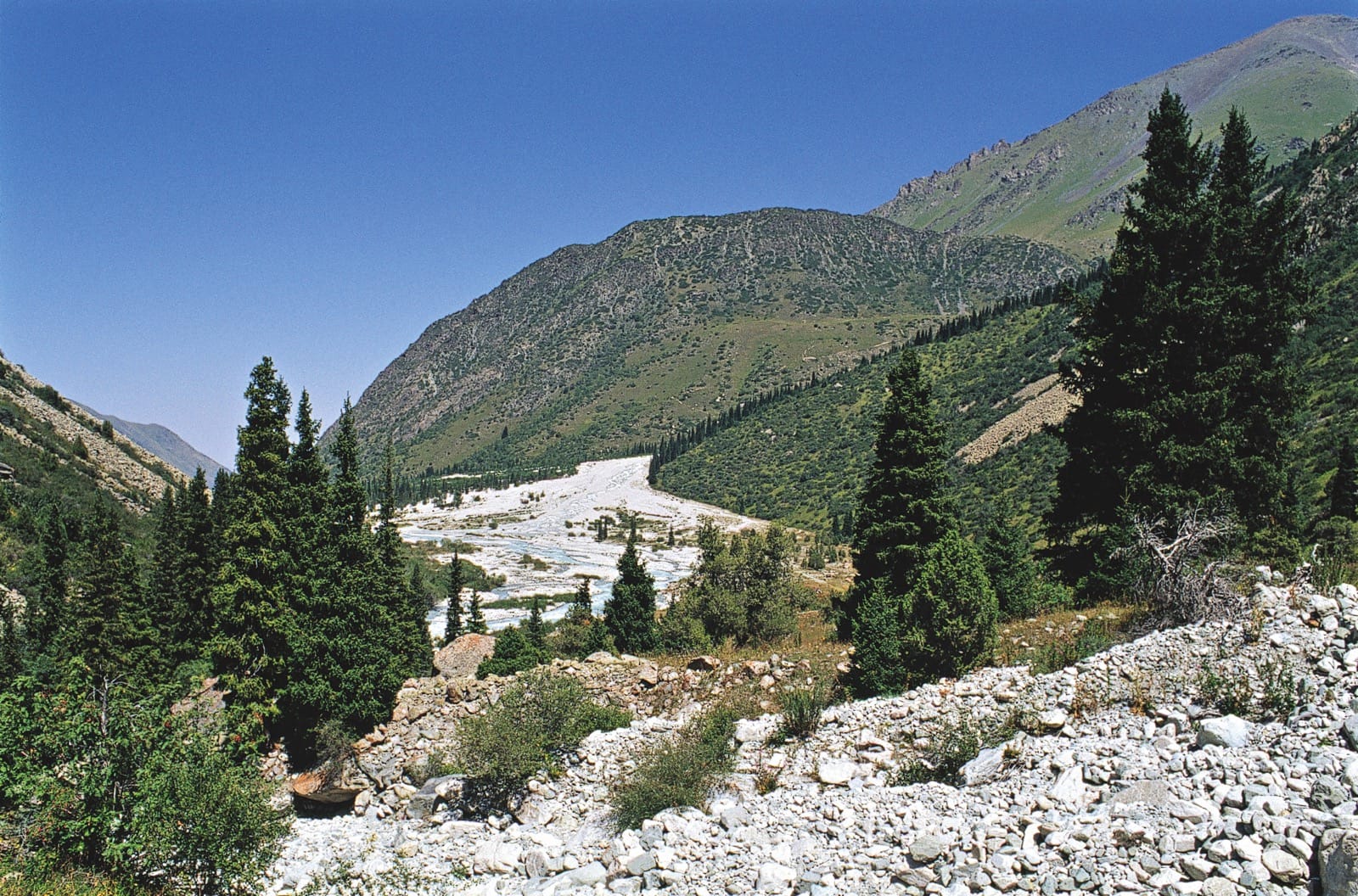Picea schrenkiana
Sponsor
Kindly sponsored by
This genus has been sponsored and new text is being prepared.
Credits
Article from Bean's Trees and Shrubs Hardy in the British Isles
Article from New Trees by John Grimshaw & Ross Bayton
Recommended citation
'Picea schrenkiana' from the website Trees and Shrubs Online (treesandshrubsonline.
Genus
Synonyms
- P. obovata var. schrenkiana (Fisch. & Mey.) Carr.
- P. tianschanica Rupr.
Infraspecifics
Other taxa in genus
- Picea abies
- Picea alcoquiana
- Picea asperata
- Picea brachytyla
- Picea breweriana
- Picea chihuahuana
- Picea crassifolia
- Picea engelmannii
- Picea farreri
- Picea glauca
- Picea glehnii
- Picea jezoensis
- Picea koraiensis
- Picea koyamae
- Picea likiangensis
- Picea linzhiensis
- Picea × lutzii
- Picea mariana
- Picea martinezii
- Picea maximowiczii
- Picea meyeri
- Picea morrisonicola
- Picea obovata
- Picea omorika
- Picea orientalis
- Picea polita
- Picea pungens
- Picea retroflexa
- Picea rubens
- Picea sitchensis
- Picea smithiana
- Picea spinulosa
- Picea wilsonii
A tall tree in the wild, of very slender habit; the branchlets are greyish white, glabrous or nearly so; the leaves arranged all round the twig, spine-tipped in young trees, blunter in adult ones, 3⁄4 to 11⁄4 in. long, quadrangular, dark green, with two to four very indistinct lines of stomata on all four surfaces. Cones 3 to 4 in. long, cylindrical; scales rounded, and not toothed at the apex.
Native of Central Asia in the Djungarski Alatau and Tianshan (S.E. Kazakhstan), extending into Chinese Turkestan and said also to occur as far east as Kansu; discovered by Schrenk in 1840 and introduced to cultivation in western Europe around 1878. It was at first considered to be near to P. obovata, but Kent noted that the trees in Veitch’s nursery, raised from the original seed, bore a very strong resemblance to P. smithiana of the Himalaya, and that is now considered to be the nearest ally of Schrenk’s spruce. But the leaves of the latter are shorter than in P. smithiana and the radial arrangement is not so marked. Also, in cultivated trees of P. schrenkiana the branchlets are not pendulous, though they are said to be so quite frequently on wild trees. A tree at Bayfordbury, Herts, pl. 1907, measures 50 × 31⁄2 ft (1973).
From the Supplement (Vol. V)
specimens: Wakehurst Place, Sussex, 66 × 31⁄2 ft (1981); Dropmore, Bucks., 63 × 33⁄4 ft (1982); Priestwood (Harewood), Bucks., 52 × 31⁄4 ft (1984); Westonbirt, Glos., 52 × 31⁄2 ft (1983).
From New Trees
Picea schrenkiana Fisch. & C.A. Mey.
Asian Spruce, Schrenk’s Spruce
This species was described by Bean (B196, S367) and Krüssmann (K204).
subsp. tianschanica (Rupr.) Bykov
Subsp. tianschanica differs from the type primarily in its shorter, thicker leaves, (1–)1.5–2(–2.5) × 0.14–0.2 cm vs. (1.5–)2–3(–3.5) × 0.1–0.15 cm in the type. (This character may be a climatic adaptation only.) Also, the cones are elliptical-oblong rather than cylindrical-oblong, and larger (10–20 cm long vs. 6–11 cm in the type). Farjon 1990. Distribution KYRGYZSTAN: mountains surrounding the Naryn River. Habitat Montane or subalpine forest on north-facing slopes between 1300 and 3000 m asl. USDA Hardiness Zone 5. Conservation status Not evaluated. Illustration Farjon 1990, Fu et al. 1999c; NT578.
The isolation of the population of Picea schrenkiana subsp. tianschanica in an area of exceptional beauty gives it a certain interest, but it probably has no great horticultural value and seems unlikely to achieve a widespread presence in cultivation. In its broad sense P. schrenkiana is considered to be hardy but susceptible to spring frosts (Rushforth 1987a), although it can occasionally reach a respectable size. At Dawyck two plants of var. tianschanica are growing slowly, from a 1979 accession. The larger was about 2 m tall in 2006 and forming a good leader; the other was struggling to get going at 1.2 m. The foliage is green with slight glaucescence.


